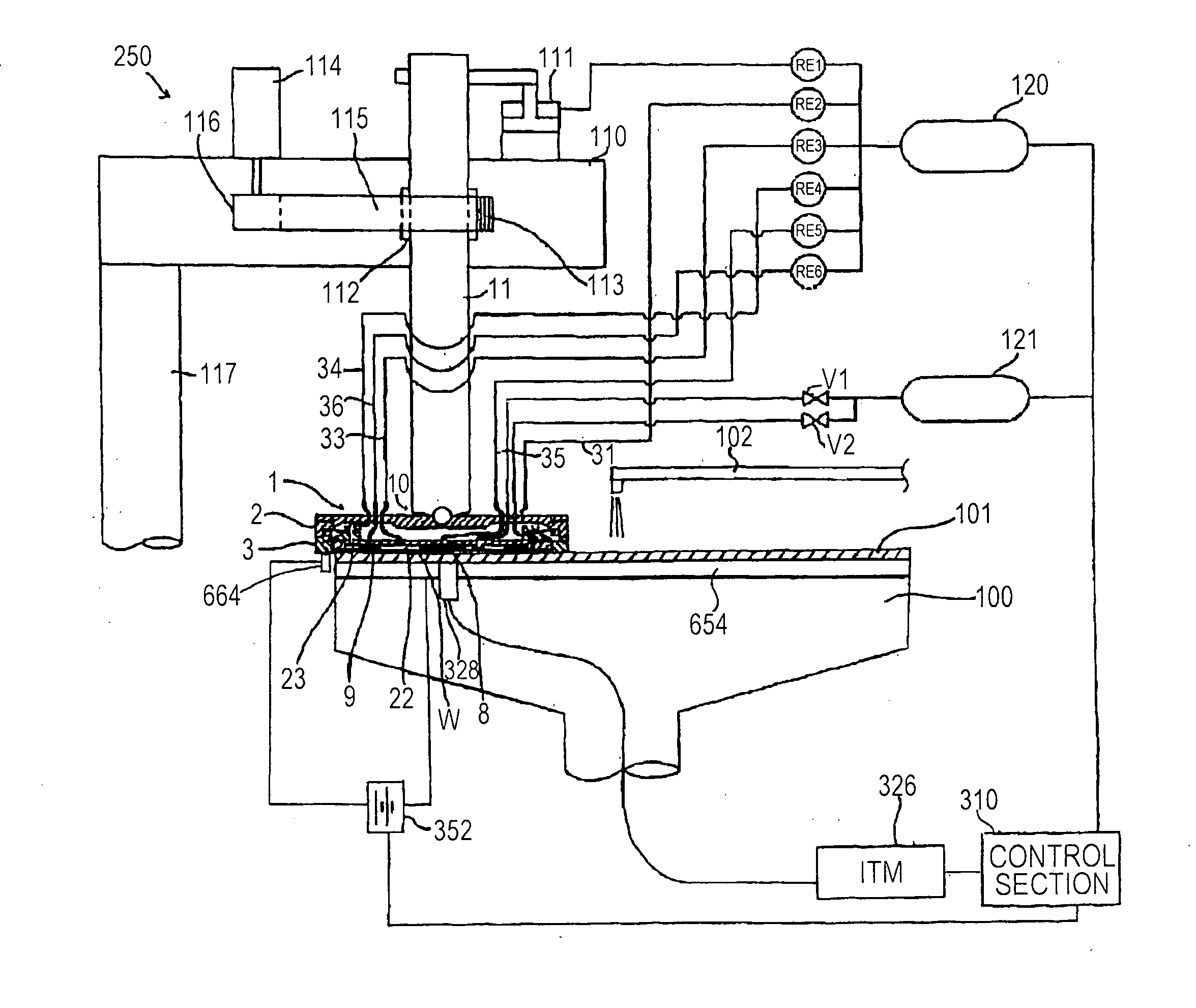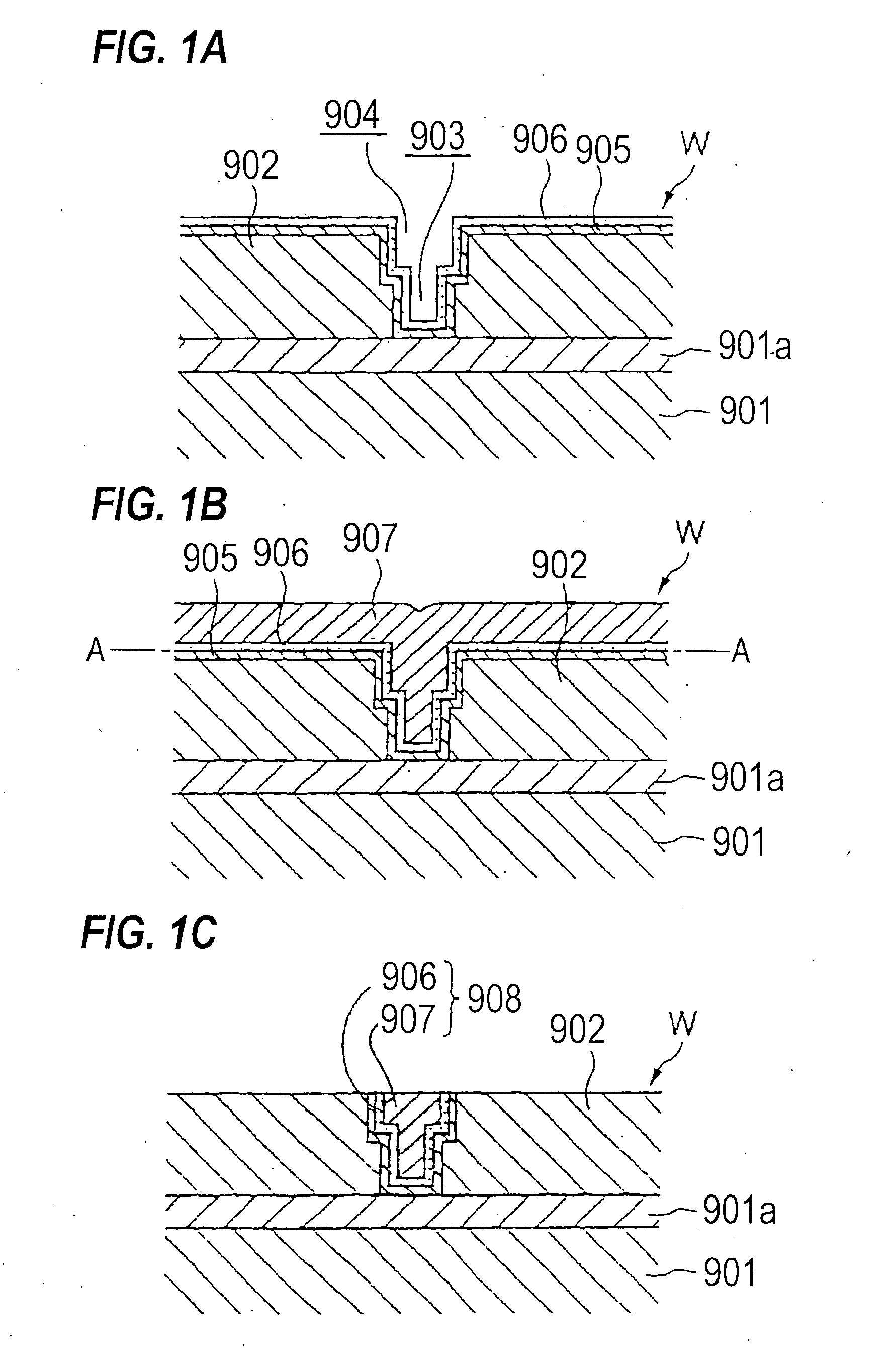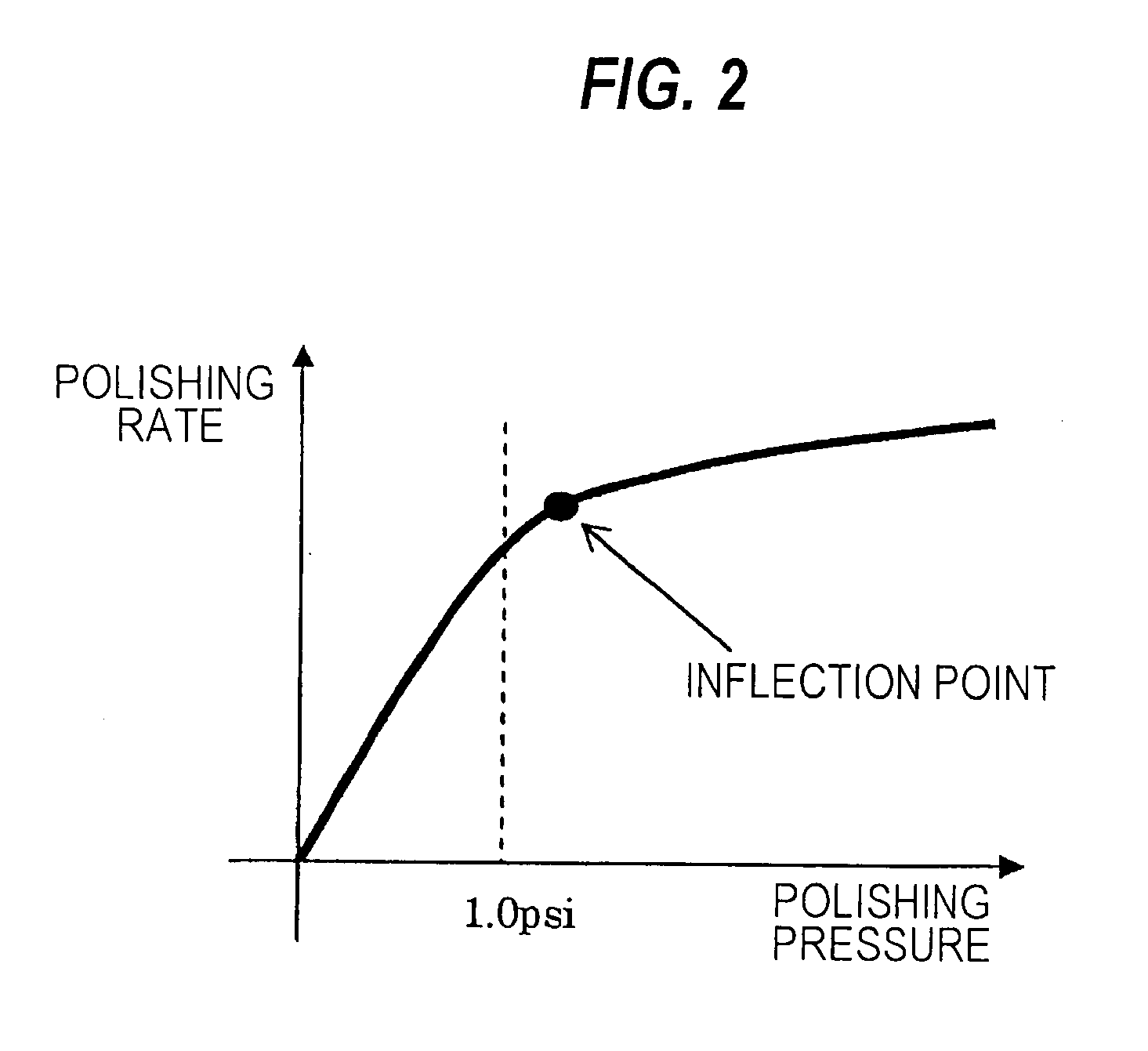Electrochemical mechanical polishing apparatus conditioning method, and conditioning solution
a technology of electrochemical mechanical polishing and conditioning solution, which is applied in the direction of abrasive surface conditioning devices, manufacturing tools, and lapping machines, etc., can solve the problems of large drop in polishing rate, large change in polishing rate in response, and high cost of power supply units (power sources) adapted to apply voltage to electrodes concentrically facing the wafer, so as to achieve uniform polishing rate, easy to perform workpiece polishing, and low cost
- Summary
- Abstract
- Description
- Claims
- Application Information
AI Technical Summary
Benefits of technology
Problems solved by technology
Method used
Image
Examples
example 1
[0341]An electrolytic solution containing malonic acid, methanesulfonic acid, and benzotriazole (corrosion inhibitor) as main components, and polyacrylic acid (molecular weight: 5000), methanol, a surfactant, and abrasive particles as additives was prepared. A conditioning solution containing malonic acid, methanesulfonic acid, and hydrogen peroxide (H2O2) was prepared. Using the electrochemical mechanical apparatus shown in FIGS. 44 and 45, conditioning was performed as follows. While the processing table 710 was rotated at a rotational speed of 30 rpm, the conditioning solution was supplied to the upper surface of the processing table 710 at a flow rate of 200 ml / min to perform conditioning of the processing electrode 716 and the polishing pad 718 for two minutes.
[0342]Next, while the processing table 710 was rotated at a rotational speed of 60 rpm, ultrapure water was supplied to the upper surface of the processing table 710 at a flow rate of 200 ml / min to perform rinsing of the ...
PUM
| Property | Measurement | Unit |
|---|---|---|
| resistance | aaaaa | aaaaa |
| relative speed | aaaaa | aaaaa |
| pressure | aaaaa | aaaaa |
Abstract
Description
Claims
Application Information
 Login to View More
Login to View More - R&D
- Intellectual Property
- Life Sciences
- Materials
- Tech Scout
- Unparalleled Data Quality
- Higher Quality Content
- 60% Fewer Hallucinations
Browse by: Latest US Patents, China's latest patents, Technical Efficacy Thesaurus, Application Domain, Technology Topic, Popular Technical Reports.
© 2025 PatSnap. All rights reserved.Legal|Privacy policy|Modern Slavery Act Transparency Statement|Sitemap|About US| Contact US: help@patsnap.com



